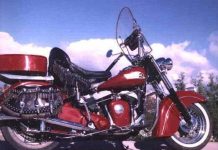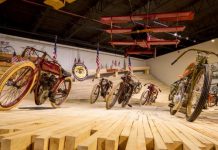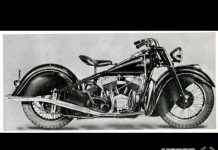The Story of Big Red
By BOB STARK:
Bob Stark started riding US motorbikes and Cushman scooters at the age of...
Yes, Indian Made An Inline-Four Motorcycle Engine
They're not just for sportbikes.
We usually think of Indian as one of the American Big Two alongside Harley-Davidson. Both have...
“Modern To The Minute” 1935 Indian Motorcycles
The first Indians came to town. The brethren gathered, looked and rode. Then came the verdict, “This year, more than ever before,...
Iowa All Over: Museum is a motorcycle mecca
ANAMOSA — Motorcycles have been on the road since the mid-1800s. And at the National Motorcycle Museum in Anamosa, you can witness...
Former motorcycle factory converted into affordable housing
A55,000-sf, five-story former manufacturing mill facility for Indian Motorcycle has been converted into 45 apartment...
Three weird motorbikes you’ve never heard of….
From the Willy’s Jeep of motorcycles to a slice of Cake…
So, you think you know motorcycles, do you? From...
New Indian Chief Model 346 “War-Time” Model
An improved and modernized Indian Chief has just been announced from Springfield. The new 74-model 346-is known as “War-time Model 3 Conversion”...
Replica Indian – E~ndian
Don't despair, though: it never was a real Indian. ...











